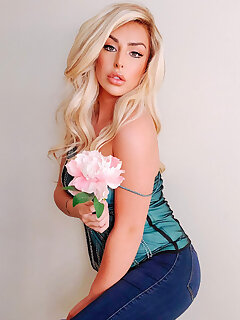Clothing and the Nude
A transvestite's wearing of clothing that is associated with or suggestive of the opposite sex (fur, which reminds the wearer both of men, who have body and facial hair, and of pubic hair or silk or satin, which is smooth like clean-shaven female flesh and the beardless female face), Beyst suggests, and allows him or her to put on the flesh--and, therefore, the body--of the opposite sex, becoming the man or woman he or she wants to be, which he or she can model before a mirror, in the imagination, or in the gaze of a third party.
Clothing also advertises social rank, for wealthy people are idle enough to wear white, just as long fingernails indicate the lack of a need to work, Beyst says, but clothes also maintain modesty, and the ancient Greeks sculpted male statues with miniature penises unless the intent was to be erotic, in which case, the penis was exaggerated in size.
Beyst argues that less attractive people, both male and female, are reduced to being always voyeurs and never exhibitionists, which injures their self-esteem and causes them to become "indifferent to female beauty," to reject "erotic beauty as mere titillation of the senses," to avenge themselves against women by destroying them, or to sublimate their sexuality in work.
The separation of behavior into private and public spheres is necessitated to avoid sharing the intimacy between lovers with strangers, and modesty is feigned, clothes being a means of maintaining the pretense, Beyst contends. Orgies violate these distinctions and often likewise contravene traditional dictates concerning which sexual acts are permissible and which are taboo.
Advertisment
- sexy shemale 🌈🍒🌈
- Would you kneel and clean that only with your tongue?
- La spinta che ti serve
- skinny gothic sissy hard fuck bbc closeup much precum intense cumshot
- Juice 2
- Il finocchio che che fa l autostop
- Young TGirl knotted in bathroom while parents in bed
- Two Cute Asian Girls BTS Photoshoot
-
Renata has the biggest, thickest, creamiest jizz of them all. Jesus what is she eating?
- CD seduces & gets breed by her co-worker


































































